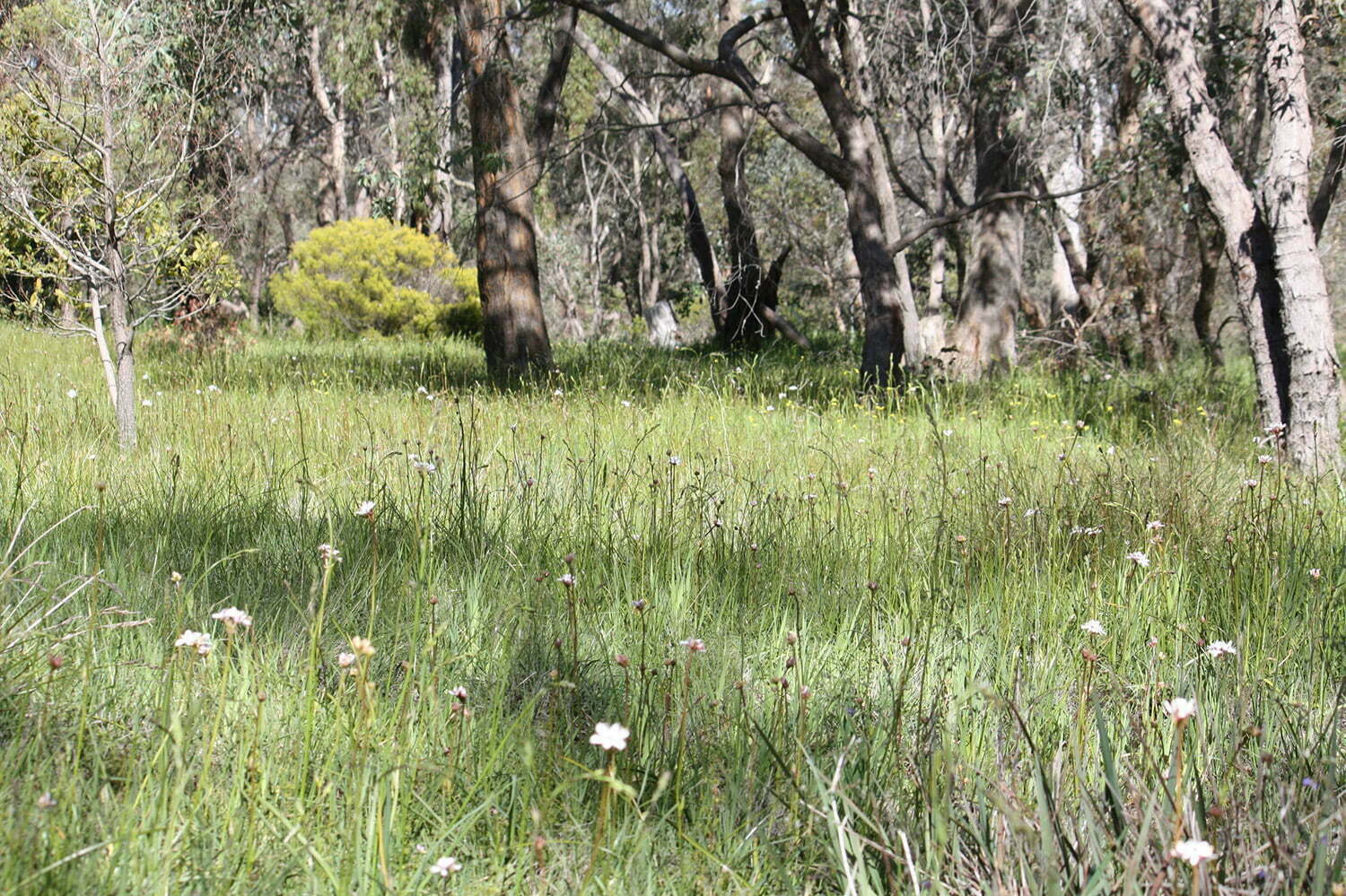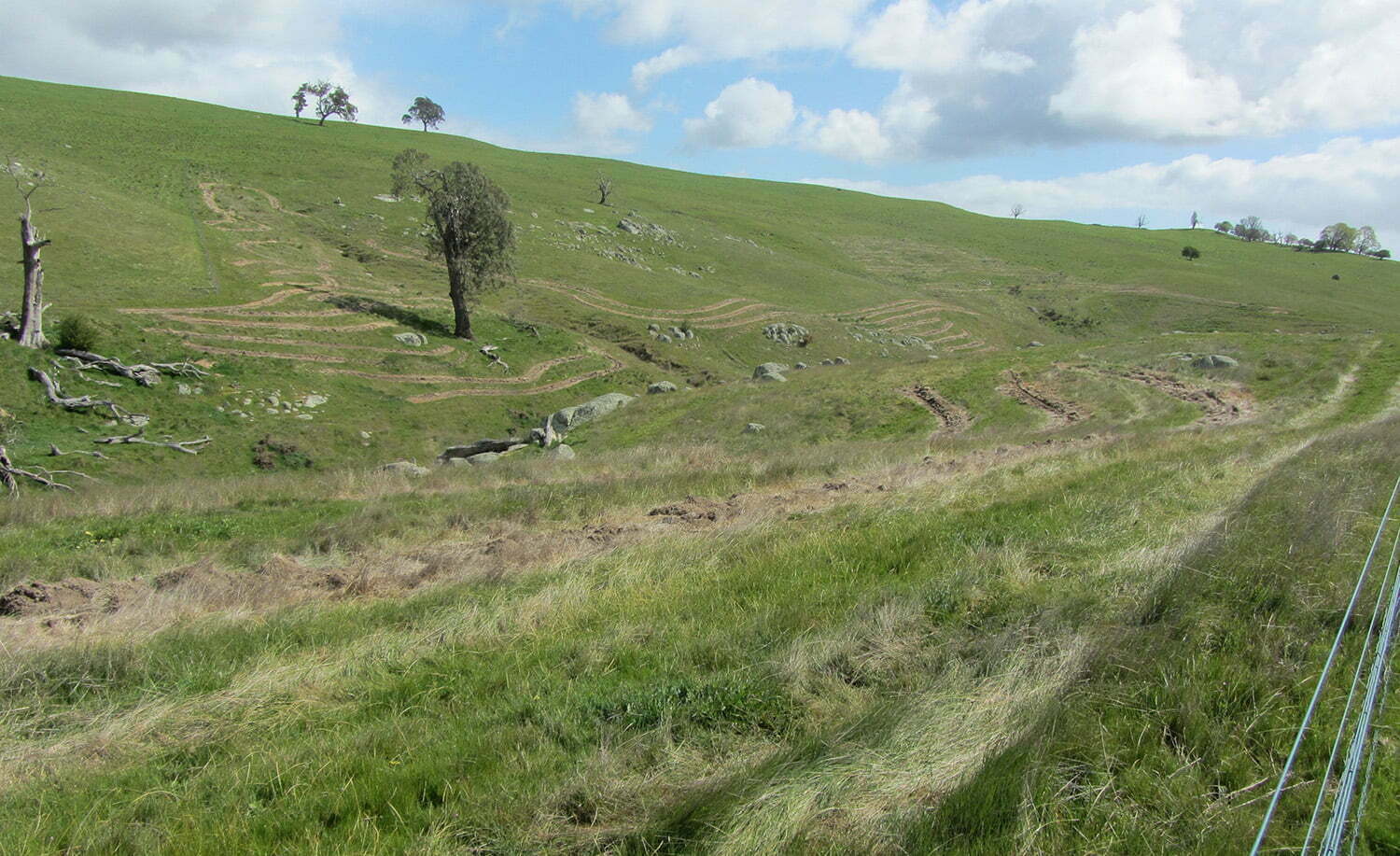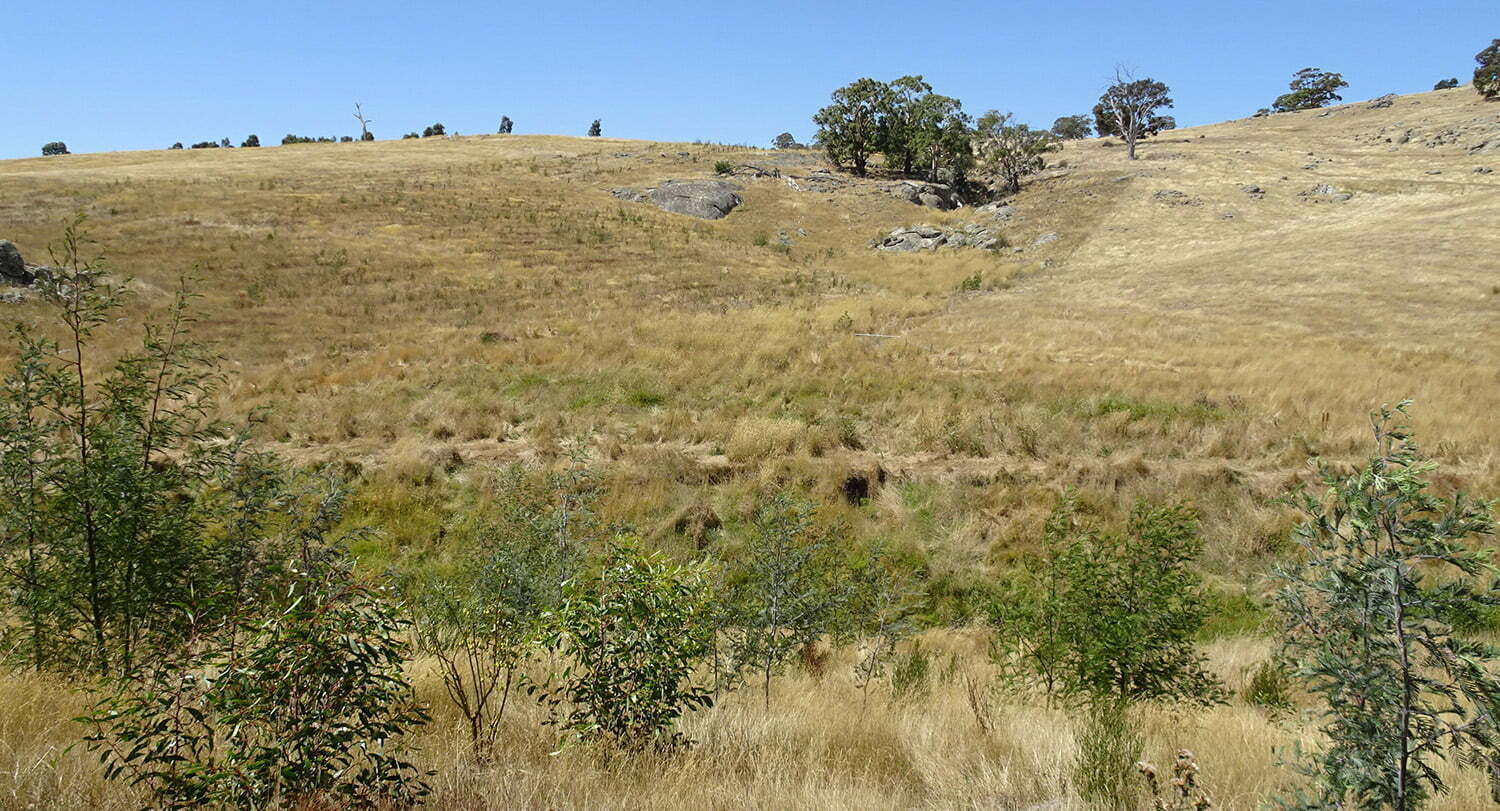Britt Gregory describes the hands-on work be ing done by the local community to Protect, Link and Enhance Remnants of Kyneton’s Grassy Woodlands.
Granite outcrops emerge from the vast, windswept rolling hills. Scattered majestic gums tower overhead, and at times are twisted and gnarled, shaped by the years. Wattles, shrubs and saplings grow among a lush carpet of delicate wildflowers, native grasses, mosses and lichens. Pipers Creek meanders through the striking landscape with its permanent waterholes and fringing vegetation, providing critical habitat linkage for a range of species in this landscape of fragmented habitat opportunities.
It may come as a surprise to see a woodland project featured in a river management magazine, but healthy waterways are essential components of all landscapes, and one small creek to the north-east of Kyneton, in Victoria’s Macedon Ranges, has become the centrepiece for the Kyneton Woodlands project.
Grassy woodlands, once widespread, are now considered highly threatened with only 20% remaining, mostly as small and isolated patches. Rich in biodiversity, over 240 species of indigenous plants have been recorded in the 24,000 hectare Kyneton Woodlands project area, including populations of the nationally threatened Clover Glycine (Glycine latrobeana) and Matted Flax-lily (Dianella amoena). Some of the woodland patches are also classified as ‘White Box-Yellow Box-Blakely’s Red Gum Grassy Woodland’; a nationally threatened ecological community.
With funding from the Australian Government, the North Central Catchment Management Authority has been working closely with almost 60 landholders in this iconic landscape for the past five years to protect, link and enhance these remnant woodlands.

Grassy woodlands that were once widespread are now considered threatened with only 20 per cent of this vegetation type remaining in the project area.
Some of this valuable remnant vegetation remains largely untouched because of the inaccessibility of the rocky terrain. This has resulted in some rare areas of relatively intact grassy woodlands.
These patches of grassy woodlands are at great risk from threats such as invasive weeds, and natural events such as fire or periods of drought. To assist their long-term survival, the Kyneton Woodlands project worked with the local community to link, buffer and expand these patches with consideration of existing terrestrial vegetation and waterway linkage opportunities.
Pipers Creek is an important feature of the project area. A 24 kilometre intermittent waterway, the creek flows through granite, basalt and sedimentary hills, before entering the mid reaches of the Campaspe River at the geologically significant Barfold Gorge.

Pipers creek
Pipers Creek provided the opportunity to achieve the significant landscape-scale objectives of the project. Fortunately, the adjoining landholders also shared in this vision resulting in a continuous, protected corridor along 10 kilometres of Pipers Creek — that’s almost half of the entire length of the waterway! The areas protected under the project extended beyond the riparian zone and up to 200 metres wide in some areas, as the Australian Government investment objectives were about enhancement of biodiversity. This often extended away from the waterway and up to nearby remnants along hilltops and also connected vegetated roadsides and areas of public bushland, resulting in a network of corridors across the landscape through which native fauna can move.

Direct seeding thriving at Pipers Creek
While the Kyneton Woodlands project concluded on 30 June 2017, it provided a ground swell of community interest. Excitingly, in one small creek in the project area we have re-discovered the Southern Pygmy Perch, a species listed as vulnerable on the Advisory List of Threatened Vertebrate Fauna in Victoria (the Murray–Darling lineage of the species). Using environmental DNA technology, we are planning to undertake further sampling for this and other fish species in spring 2017. We’re hopeful additional recordings may well provide the justification for a future riparian project for the remaining length of Pipers Creek and adjoining Jews Harp Creek.
In partnership with many groups and organisations, since 2012 the Kyneton Woodlands project has:
- protected and enhanced 1280 hectares of remnant grassy woodland vegetation
- planted more than 64,000 native seedlings direct seeded 126 kilograms of native seed
- increased the extent of grassy woodlands by 290 hectares
- installed 87 kilometres of fencing to protect vegetation from livestock
- protected and revegetated a continuous 10 kilometre stretch of Pipers Creek
- treated invasive weed species over an area of 120 hectares
- engaged almost 1000 people in biodiversity awareness raising events
We are proud of these results and are looking to continue this great work across our region.
For further information:
- Britt Gregory — britt.gregory@nccma.vic.gov.au
- Interactive Story Map — http://bit.ly/kynetonwoodlands
- You can download the pdf of this story ‘Touching wood’ .
To read this and other great stories like it, you can purchase or download a copy of RipRap 40.

